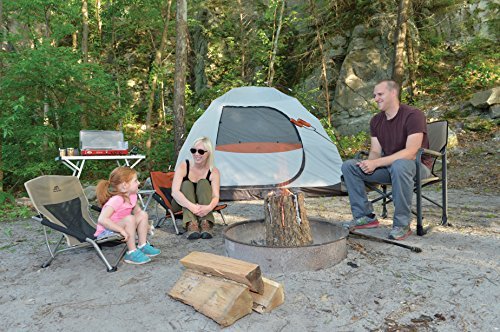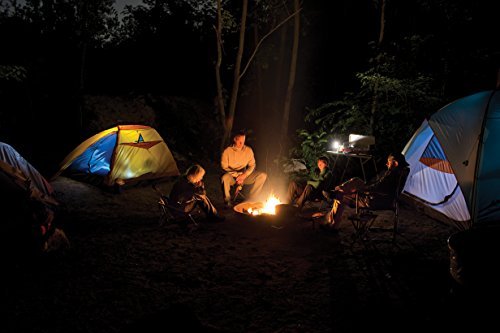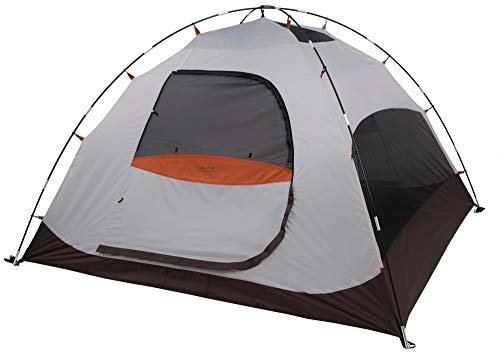Last Updated on September 9, 2025
When you head out on a hiking adventure or an overnight backpacking trip, your tent becomes more than just a shelter—it becomes your home away from home. The best ultralight backpacking tent not only shields you from unpredictable weather but also plays a huge role in your comfort, safety, and overall trail experience.
Traditional tents are often bulky and heavy, making them difficult to carry over long distances. By contrast, ultralight backpacking tents are designed with cutting-edge materials and minimalist construction that significantly reduce weight without sacrificing durability. This makes them especially popular among thru-hikers, solo backpackers, and lightweight campers who need efficiency on every mile of their journey.
Related: Best Ultralight Backpacks – Lightest backpack list
A lighter tent means you save energy, cover more distance in a day, and reduce the risk of fatigue or injury. And since your tent is one of the heaviest items in a backpacking kit—alongside a sleeping bag and backpack—choosing an ultralight model can transform your hiking experience.
In 2025, innovation in tent technology has gone even further. Modern ultralight tents now use advanced fabrics like Dyneema Composite Fabric (DCF), which is stronger, lighter, and more waterproof than older SilNylon materials. Many also include features such as:
- Freestanding or semi-freestanding structures for quick setup.
- Improved ventilation systems to prevent condensation.
- Compact pole designs that fit easily in smaller backpacks.
- Eco-friendly and sustainable materials, appealing to environmentally conscious hikers.
This guide will walk you through everything you need to know: from the essential features of ultralight tents, to updated design trends, to detailed reviews of the top 5 best ultralight backpacking tents in 2025. Whether you’re hiking solo, camping with a partner, or exploring with family, this article will help you choose the perfect lightweight shelter to match your adventure.
Related: Our Recommended Top 6 best tactical backpack list
Key Features to Look for in the Best Ultralight Backpacking Tent
When shopping for an ultralight tent, it’s easy to get overwhelmed by the different designs, weights, and marketing claims. To make a smart choice, you need to focus on a few core features that determine whether the tent will truly serve you on the trail. Below are the most important factors every backpacker should evaluate before buying.
1. Weight – The Heart of Ultralight Gear
The single biggest reason hikers choose ultralight tents is to save weight. Traditional tents often weigh 5–7 pounds, but modern ultralight models weigh 1.5–3 pounds on average. This reduction makes a huge difference when you’re carrying gear for multiple days.
Best materials for weight savings:
- Dyneema Composite Fabric (DCF): Strong, waterproof, and lighter than SilNylon. It doesn’t sag when wet, though it’s more expensive.
- SilNylon and SilPoly: Affordable and durable options, though slightly heavier than DCF.
Related: Best Backpack for EDC (Most Popular List)
👉 Pro Tip: For thru-hikes like the Pacific Crest Trail (PCT) or Appalachian Trail (AT), every ounce matters. Prioritize tents under 2 pounds if you’re trekking hundreds of miles.
2. Design & Stability
Tent design directly impacts comfort, livability, and performance in harsh weather.
Freestanding vs. Non-Freestanding:
- Freestanding tents use poles and can be pitched almost anywhere, even on rocky or sandy terrain.
- Non-freestanding tents rely on stakes and trekking poles, making them lighter but requiring more setup skill.
Pole structure:
- X-pole or hubbed designs offer better stability in wind and rain.
- Avoid flat-roofed designs, as heavy snow or rain can cause sagging.
Entry and vestibule:
- Two-door tents with vestibules provide easy entry and gear storage.
- Single-door designs are lighter but less convenient.
3. Capacity & Interior Space
Think carefully about how many people (and how much gear) the tent needs to hold.
- Solo tents are ultralight but may feel cramped if you carry lots of gear.
- Two-person models are the most popular, balancing weight and livability.
- Family-size backpacking tents exist but are heavier, so they’re best for shorter hikes.
👉 Updated 2025 trend: Many new ultralight tents include extra headroom using vertical walls or extended pole designs, making small tents feel much roomier.
4. Weather Resistance & Durability
Your tent should protect you against rain, wind, and cold without weighing you down.
- Waterproofing: Look for rainflies with at least 1,200mm–3,000mm hydrostatic head rating. Premium Dyneema rainflies exceed this standard.
- Ventilation: Mesh panels reduce condensation—a common problem in single-wall tents.
- Floor strength: A bathtub floor design prevents water from seeping in during heavy rain.
5. Ease of Setup
On long hikes, the last thing you want is to spend 30 minutes wrestling with tent poles.
- Freestanding tents are fastest to set up.
- Trekking-pole shelters are light but require practice to pitch properly.
👉 Many brands now use color-coded poles and clips to simplify setup. Some even integrate quick-pitch systems that take less than two minutes.
6. Season Rating
Ultralight tents are usually built as 3-season shelters, perfect for spring, summer, and fall. They handle rain and moderate winds but are not designed for heavy snow.
- 3-season tents: Best for most hikers—lightweight, breathable, and versatile.
- 4-season tents: Built for winter use, but they’re heavier (4–6 pounds). Choose only if you plan to camp in alpine or snowy conditions.
7. Price & Value
Price often reflects the balance between weight and durability.
- Budget options ($150–$250): Heavier (2.5–3.5 lbs), made from SilNylon or polyester.
- Mid-range options ($250–$400): Lighter (2–2.5 lbs), better pole systems, improved waterproofing.
- Premium options ($400+): Ultralight (under 2 lbs), Dyneema fabric, advanced designs, and maximum weather resistance.
👉 In 2025, many outdoor brands are also focusing on sustainability—recycling nylon, reducing chemical coatings, and offering repair programs. This means you can invest in a tent that lasts longer and has a smaller environmental impact.
Related: Multi-Functional Best Tactical Messenger Bag List
SAVE TIME: Directly Go Our Recommend Top 5 Ultralight Backpacking Tents list
Comparing Different Types of Ultralight Backpacking Tents
When it comes to ultralight tents, the variety of designs can be confusing. Each style has its own strengths, weaknesses, and ideal use cases. Understanding these differences will help you choose a tent that matches your hiking style, terrain, and weather expectations.
Freestanding vs. Non-Freestanding Tents
Freestanding tents are often considered the most user-friendly because they can stand upright without stakes. This makes them perfect for rocky terrain, sand, or hard ground where staking is difficult. They also tend to be more stable in windy conditions.
Non-freestanding tents, on the other hand, require trekking poles or stakes to stay upright. The big advantage here is weight savings—they often cut up to half a pound compared to freestanding models. For thru-hikers who already carry trekking poles, this is an efficient option. However, they take more practice to pitch correctly and may not work as well on all surfaces.
Single-Wall vs. Double-Wall Construction
-
Single-wall tents combine the rainfly and inner wall into one piece of fabric, making them very light and quick to set up. The trade-off is condensation—moisture from your breath can collect inside during the night.
-
Double-wall tents use a separate inner mesh tent and rainfly, creating better ventilation and reducing condensation. They are slightly heavier, but many backpackers find the extra comfort worth it.
👉 Updated 2025 note: Hybrid designs are becoming popular—light single-wall tents with added vents or partial mesh sections to minimize condensation issues.
Trekking-Pole Shelters vs. Pole-Supported Tents
Minimalist backpackers often prefer trekking-pole shelters because they eliminate the need for dedicated tent poles. If you’re already hiking with poles, these shelters save weight and pack space.
Pole-supported tents, however, remain the favorite for many because they’re sturdier and easier to assemble. Modern hubbed pole systems also increase interior space without adding too much weight, giving you more comfort after a long hike.
Capacity Considerations
One-person tents are the lightest, but they can feel cramped, especially if you carry a lot of gear. Two-person models strike a balance, offering extra room for comfort or storage without adding much weight.
For small groups or families, larger ultralight options exist, but keep in mind that capacity usually increases weight. A “2-person” tent may be snug, while a “2+” version often provides the same structure with a little extra width or length for comfort.
When to Choose Which Style
- If you hike in variable terrain and need easy setup → go with freestanding.
- If you want the lightest possible load and already use trekking poles → choose non-freestanding.
- For damp or humid environments → a double-wall tent reduces condensation.
- For speed and minimalism → single-wall is lighter and quicker to pitch.
Must-Have Qualities of the Best Ultralight Backpacking Tents
By now, you know that weight, design, and setup style all matter when picking a tent. But what truly separates an average tent from one of the best ultralight backpacking tents are the fine details. These qualities often determine whether your shelter will perform reliably on the trail or leave you frustrated in bad weather.
Durability Without Extra Weight
Ultralight doesn’t mean fragile. High-quality tents are built with advanced fabrics that balance lightness and toughness. For example, Dyneema Composite Fabric (DCF) is not only lighter than SilNylon but also resists tearing and stretching. Similarly, reinforced seams and ripstop nylon floors protect against punctures from rocks, sticks, or rough ground.
Weather Protection You Can Trust
A tent is worthless if it fails during a sudden storm. Always check for:
- A bathtub-style floor to prevent water from seeping in.
- A full-coverage rainfly with sealed seams to block rain.
- Strong pole architecture (aluminum or carbon fiber) to withstand high winds.
Even a lightweight tent should keep you dry and warm through unexpected weather.
Ventilation to Reduce Condensation
One common issue with ultralight shelters—especially single-wall designs—is condensation. Waking up with wet gear inside your tent is uncomfortable and can shorten the lifespan of your equipment.
Look for mesh panels, adjustable vents, and dual-door designs. These features keep air circulating while still protecting you from bugs and rain.
Compact and Packable Design
When backpacking, every cubic inch of space matters. A top-quality ultralight tent should pack down small enough to fit into side pockets or compress inside your backpack. Many brands now include roll-top stuff sacks or cube-shaped packs that save space and make organization easier.
Quick Setup in All Conditions
After hiking all day, the last thing you want is a complicated pitch. The best ultralight backpacking tents use color-coded clips and poles, or a simple trekking-pole pitch system, to ensure you can set up in minutes—even in fading light or heavy rain.
Sustainability and Eco-Friendly Materials
In 2025, many outdoor brands are shifting toward eco-conscious production. Ultralight tents made with recycled polyester, PFC-free water-repellent coatings, and repair programs not only perform well but also help reduce environmental impact. Choosing these options means your tent supports both your adventures and the planet.
Top 5 Best Ultralight Backpacking Tent Reviews
To make your decision easier, we’ve reviewed some of the most popular and reliable ultralight backpacking tents available in 2025. These tents balance weight, durability, and comfort while keeping packability in mind. Each option suits different hiking styles—from solo thru-hikers to couples and small groups.
1. Zpacks Duplex Zip Tent – Best for Thru-Hikers
The Zpacks Duplex Zip continues to dominate the ultralight market, especially among long-distance hikers. Made with Dyneema Composite Fabric (DCF), this tent is incredibly light yet tough enough to handle months of daily use. Check Price
Check Price
Weight: ~19 oz (1.2 lbs)
Capacity: 2-person (popular for solo hikers who want more space)
Design: Non-freestanding, pitched with trekking poles
Highlights:
- Fully waterproof Dyneema fabric (no sagging in rain)
- Dual doors and vestibules for easy entry and gear storage
- Improved zipper closure for storm protection
👉 Why we recommend it: At under 20 ounces, this is one of the lightest functional backpacking tents on the market, ideal for thru-hikes like the Appalachian Trail.
2. Big Agnes Tiger Wall UL2 Solution Dye – Best Ultralight Freestanding Tent
For hikers who want the convenience of a freestanding design without sacrificing weight, the Big Agnes Tiger Wall UL2 is a top choice. The new solution-dyed fabric also reduces water usage and extends UV resistance.
Weight: ~2 lbs 3 oz
Capacity: 2-person
Design: Semi-freestanding
Highlights:
- Two vestibules and doors for comfort
- Easy color-coded pole setup
- Eco-friendly, UV-resistant fabrics
👉 Why we recommend it: A solid balance between ultralight weight and durability, with better interior space than many competitors.
3. NEMO Hornet OSMO 2P – Best for Ventilation & Comfort
The NEMO Hornet OSMO is perfect for hikers who want maximum ventilation and livability. Its OSMO fabric is water-repellent, resists stretching, and is made from 100% recycled yarns.
Weight: ~2 lbs 6 oz
Capacity: 2-person
Design: Semi-freestanding with hubbed poles
Highlights:
- Generous headroom thanks to pre-bent poles
- Excellent ventilation for reducing condensation
- Bluesign®-approved sustainable materials
👉 Why we recommend it: One of the most comfortable ultralight tents on the market, especially in humid environments.
4. Durston X-Mid Pro 2 – Best Balance of Weight and Livability
Designed by backpacker Dan Durston, the X-Mid Pro 2 has quickly become a cult favorite. It offers excellent storm protection, a unique pole design, and plenty of interior space while keeping the weight low.
Weight: ~20 oz (1.25 lbs)
Capacity: 2-person
Design: Non-freestanding, trekking-pole setup
Highlights:
- Offset poles create huge interior space
- Fully waterproof Dyneema construction
- Simple, fast pitch with just four stakes
👉 Why we recommend it: Incredibly spacious for the weight, making it a great option for taller hikers or those who dislike cramped tents.
5. MSR Freelite 2 – Best Ultralight Tent for Weekend Trips
The MSR Freelite 2 is a tried-and-true favorite that’s been updated for 2025 with stronger fabrics and lighter poles. It’s freestanding, easy to pitch, and offers reliable performance for both beginners and seasoned hikers.
Weight: ~2 lbs 5 oz
Capacity: 2-person
Design: Freestanding
Highlights:
- Large doors for easy entry
- Good interior height for sitting up
- Packs down small for weekend adventures
👉 Why we recommend it: A user-friendly ultralight tent with reliable quality, perfect for backpackers who don’t want the learning curve of trekking-pole shelters.
Frequently Asked Questions (FAQs)
1. What qualifies as an ultralight backpacking tent?
An ultralight backpacking tent is generally defined as a shelter weighing under 3 pounds. Most modern ultralight models weigh between 1.5–2.5 pounds and are designed to minimize bulk while still providing weather protection and comfort.
2. How much should I expect to spend on an ultralight tent?
-
Budget range ($150–$250): Heavier (around 3 lbs), made from polyester or SilNylon.
-
Mid-range ($250–$400): Balance of weight and durability, often semi-freestanding.
-
Premium ($400–$700+): Dyneema Composite Fabric, under 2 lbs, designed for thru-hikers.
👉 If you hike frequently or plan a thru-hike, a premium option may save weight and last longer. For casual weekend trips, mid-range models are often enough.
3. Are ultralight tents durable enough for long trips?
Yes, but durability depends on materials and handling. Dyneema and high-denier ripstop nylon floors are very durable but require careful use. Always clear sharp rocks or sticks before pitching, and use a footprint for extra protection.
4. Can ultralight tents handle extreme weather?
Most ultralight tents are designed as 3-season shelters, meaning they handle rain, wind, and moderate cold very well. However, they are not ideal for heavy snow or extreme alpine conditions. For winter expeditions, consider a 4-season tent.
5. What size tent should I choose?
- Solo hikers: A 1P tent is lighter, but a 2P tent often provides more comfort and gear storage.
- Couples: A 2P ultralight tent is sufficient for most, though snug.
- Families or groups: Larger ultralight options exist, but the weight savings diminish as capacity increases.
6. Are trekking-pole tents worth it?
If you already hike with trekking poles, they’re a great choice. They save weight and pack down small. However, they require practice to set up and may not be ideal for beginners.
Final Conclusion
The best ultralight backpacking tent is not just about weight—it’s about finding the right balance between comfort, protection, durability, and packability.
- If you’re a thru-hiker looking to shave every ounce, the Zpacks Duplex or Durston X-Mid Pro are unbeatable.
- If you prefer ease of setup and comfort, the Big Agnes Tiger Wall or MSR Freelite deliver excellent performance.
- For those who want extra ventilation and sustainable materials, the NEMO Hornet OSMO is a standout choice.
Remember, your tent is your home in the wilderness. Investing in a high-quality ultralight tent means better sleep, less fatigue, and more enjoyment on the trail. Whether you’re venturing on a weekend getaway or a months-long thru-hike, the right ultralight backpacking tent will keep you protected, comfortable, and ready for adventure.


 Check Today’s Price
Check Today’s Price Check Today’s Price
Check Today’s Price Check Today’s Price
Check Today’s Price Check Today’s Price
Check Today’s Price